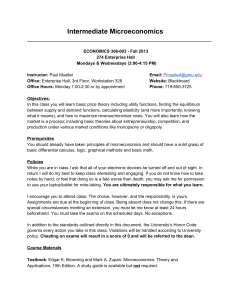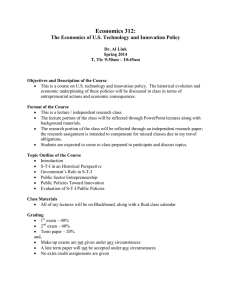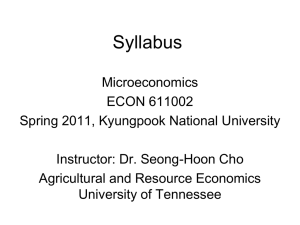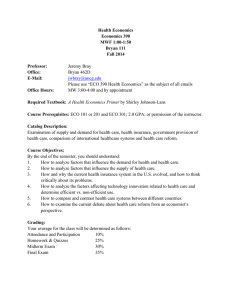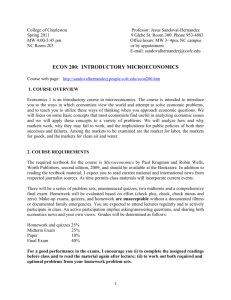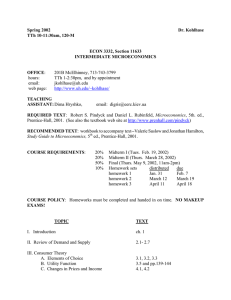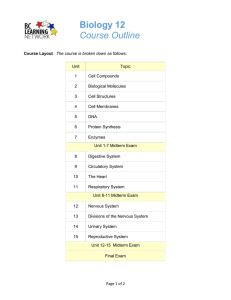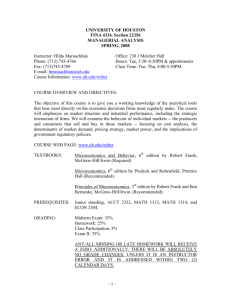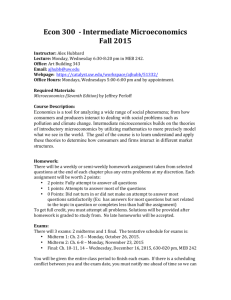Economics 642: Microeconomics II Syllabus UNCG Spring 2015
advertisement
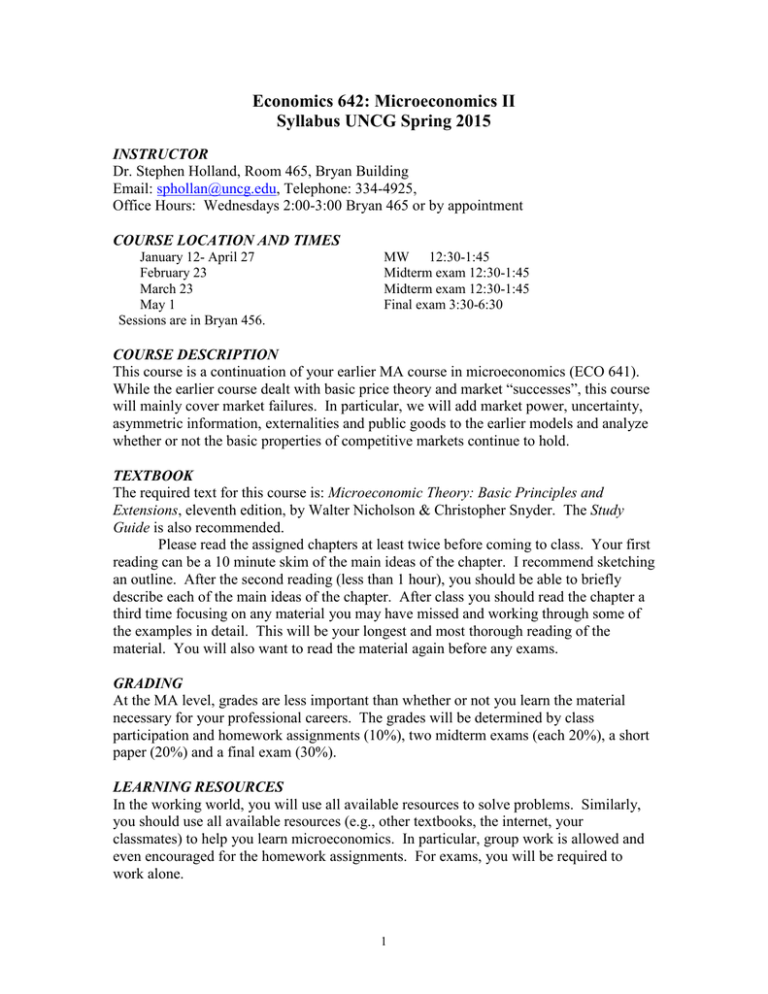
Economics 642: Microeconomics II Syllabus UNCG Spring 2015 INSTRUCTOR Dr. Stephen Holland, Room 465, Bryan Building Email: sphollan@uncg.edu, Telephone: 334-4925, Office Hours: Wednesdays 2:00-3:00 Bryan 465 or by appointment COURSE LOCATION AND TIMES January 12- April 27 February 23 March 23 May 1 Sessions are in Bryan 456. MW 12:30-1:45 Midterm exam 12:30-1:45 Midterm exam 12:30-1:45 Final exam 3:30-6:30 COURSE DESCRIPTION This course is a continuation of your earlier MA course in microeconomics (ECO 641). While the earlier course dealt with basic price theory and market “successes”, this course will mainly cover market failures. In particular, we will add market power, uncertainty, asymmetric information, externalities and public goods to the earlier models and analyze whether or not the basic properties of competitive markets continue to hold. TEXTBOOK The required text for this course is: Microeconomic Theory: Basic Principles and Extensions, eleventh edition, by Walter Nicholson & Christopher Snyder. The Study Guide is also recommended. Please read the assigned chapters at least twice before coming to class. Your first reading can be a 10 minute skim of the main ideas of the chapter. I recommend sketching an outline. After the second reading (less than 1 hour), you should be able to briefly describe each of the main ideas of the chapter. After class you should read the chapter a third time focusing on any material you may have missed and working through some of the examples in detail. This will be your longest and most thorough reading of the material. You will also want to read the material again before any exams. GRADING At the MA level, grades are less important than whether or not you learn the material necessary for your professional careers. The grades will be determined by class participation and homework assignments (10%), two midterm exams (each 20%), a short paper (20%) and a final exam (30%). LEARNING RESOURCES In the working world, you will use all available resources to solve problems. Similarly, you should use all available resources (e.g., other textbooks, the internet, your classmates) to help you learn microeconomics. In particular, group work is allowed and even encouraged for the homework assignments. For exams, you will be required to work alone. 1 SPECIFIC COURSE LEARNING OBJECTIVES Upon successful completion of this course, students will be able to: 1. Explain the importance of the Fundamental Welfare Theorems. 2. Describe monopoly formation, maintenance, and pricing. 3. Compare and contrast first- second- and third-degree price discrimination. 4. Apply Cournot and Bertrand models of oligopoly to analyze inefficiencies of imperfect competition. 5. Critique traditional models of imperfect competition. 6. Apply the concept of Nash equilibrium to solve simple games. 7. Explain the Prisoner’s Dilemma game and its importance to economics. 8. Discuss the importance of entry in long-run models of imperfect competition. 9. Explain moral hazard and adverse selection. 10. Discuss the market failure associated with asymmetric information. 11. Describe the importance of externalities and public goods and some mechanisms for correcting the resulting market failures. 12. Apply a social welfare function to show the optimal allocation in an Edgeworth box diagram. 2
